Ultimate Guide to Deep Cleaning Your Home
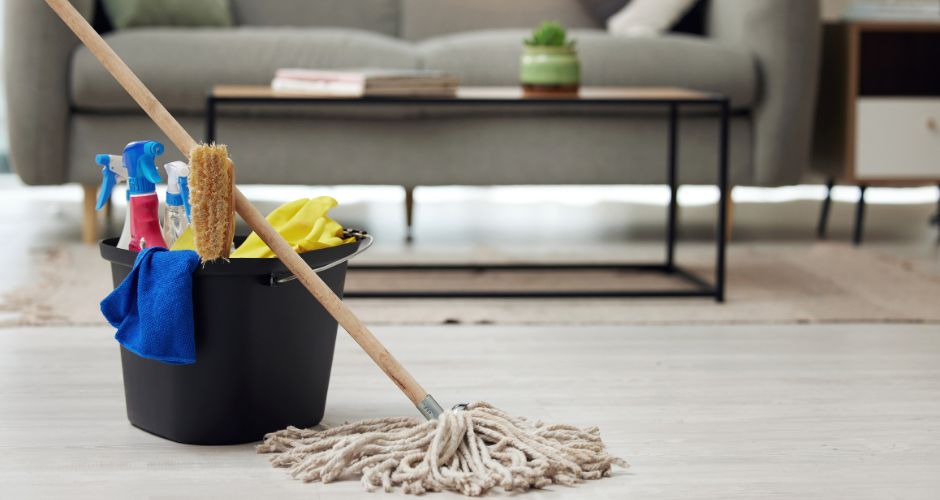
Have you ever looked around your house and wondered how to tackle the overwhelming chaos that seems to have taken control? Deep cleaning is more than just your regular cleaning routine; it’s a comprehensive process that involves cleaning and disinfecting every corner of your living space to maintain a spotless, hygienic, and organized environment.
This comprehensive guide will take you through the steps needed to achieve a sparkling and rejuvenated home, even if the task appears daunting, particularly if you need to pay more attention to some areas for an extended period. These tips will help you efficiently transform your home into a spotless haven, whether preparing for a special event or simply aiming to maintain cleanliness.
Gather the Cleaning Supplies You Need
Gathering all the necessary cleaning supplies before embarking on a deep clean. Being well-prepared with the right tools and products can significantly streamline the process. Here’s a list of typical cleaning materials you’ll require:
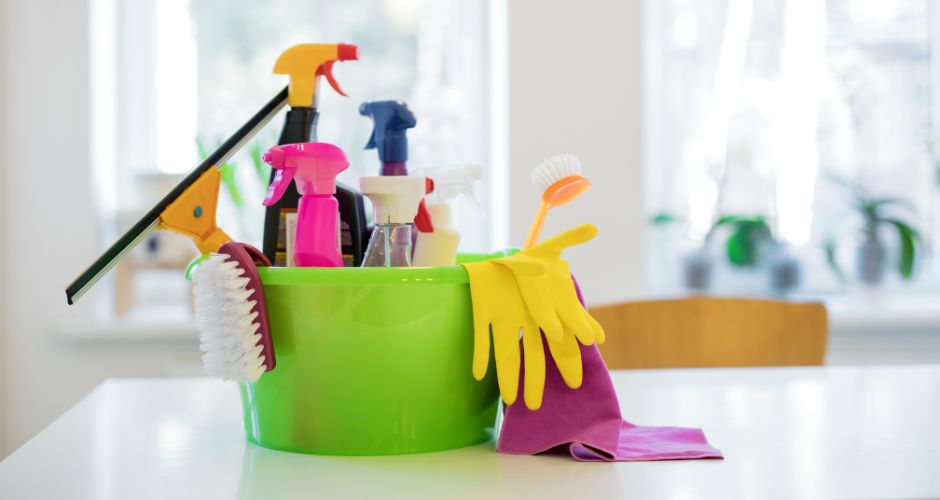
- Cleaning solutions: These may include disinfectant, bathroom cleaner, glass cleaner, all-purpose cleaner, and any specialty cleaners needed for specific tasks.
- Cleaning equipment: You’ll need scrubbing brushes, sponges, scouring pads, and various cleaning materials such as paper towels and microfiber cloths.
- Floor cleaning tools: Ensure you have a broom, mop, vacuum, and mop bucket.
- Trash bags are essential for disposing of trash and items you no longer need.
- Personal safety measures: If you have sensitivities to cleaning agents, wearing rubber gloves and a mask is a good idea.
- Dusting tools: Options like feather dusters, microfiber cloths, or dusting mitts effectively capture dust without spreading it.
Declutter Room by Room
Begin your deep cleaning journey by decluttering your home. As you go through each room, assess items that no longer belong or serve a purpose. Simplifying your space and streamlining the cleaning process is the key. Consider disposing of, recycling, or donating items appropriately.
Dust from Top to Bottom
Before the deep cleaning, dust each room from top to bottom. Dust sneaks into every nook and cranny, so begin with light fixtures and ceiling fans, then work your way down to baseboards, furniture, and shelves. Utilize dusters and microfiber cloths to effectively collect dust without spreading it.
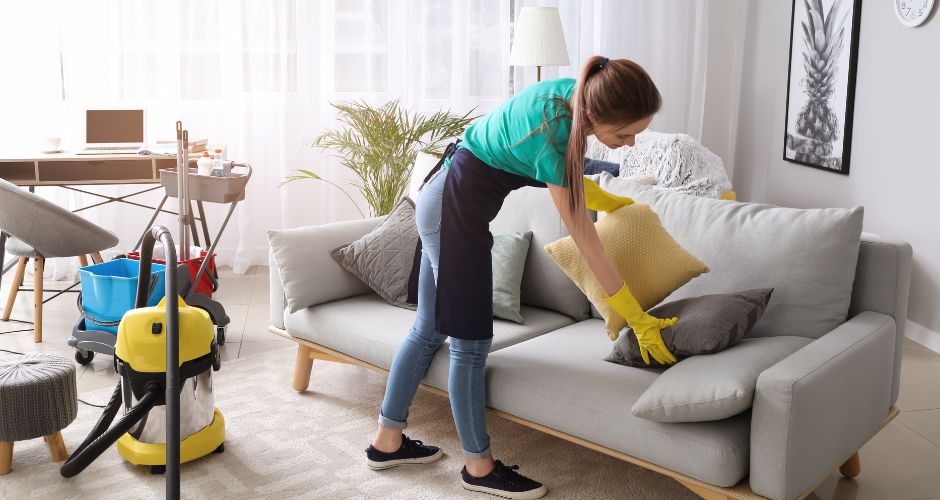
Wipe Down Surfaces
Once the dust has been removed, it’s time to wipe down all surfaces using the appropriate cleaning solutions. Pay close attention to frequently touched areas such as countertops, light switches, and doorknobs. In these areas, using a disinfectant cleaner is crucial to eliminate bacteria and germs effectively.
Clean Windows and Mirrors
High-quality glass cleaner and a lint-free cloth can achieve a streak-free shine on your windows and mirrors. Remember to clean window sills and tracks, often collecting dirt and dust.
Tackle Floors
To remove loose dust and debris, vacuum or sweep your floors. Depending on your flooring type, you may also need to mop or deep clean carpets. Select a suitable cleaner for hardwood floors that won’t damage the finish.
Deep Clean the Kitchen
Given its role as the heart of the home, the kitchen often demands special attention during deep cleaning. Clean all appliances inside and out, including the microwave, oven, and refrigerator. Scrub countertops, sinks, and backsplashes to eliminate stains and food residue. Remember to clean pantry shelves and cabinets, as spills and crumbs accumulate over time.
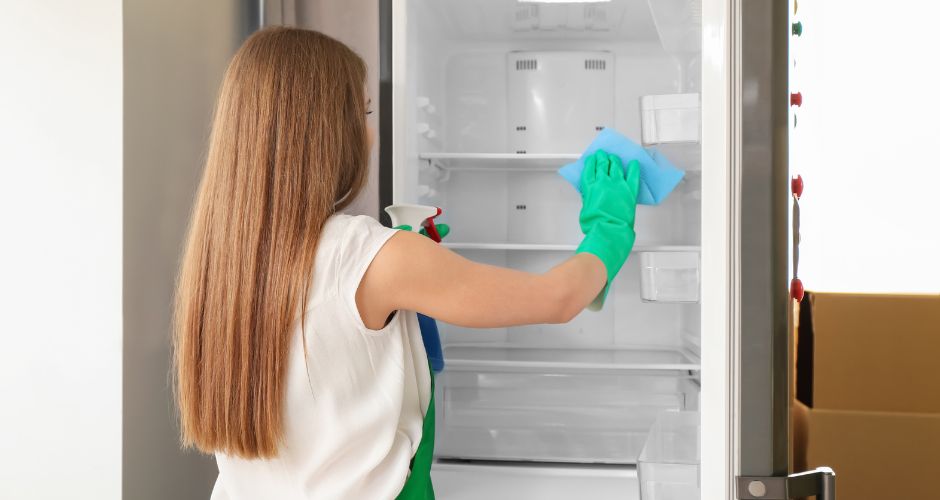
Deep Clean the Bathroom
The bathroom is yet another area that demands a meticulous cleaning routine. Clean and disinfect the toilet, bathtub, shower, and sink. Employ a scrub brush to tackle the tiles and grout, as they can be breeding grounds for mold and mildew. Replace shower curtains or liners when necessary to uphold a fresh and hygienic look.
Bedrooms and Living Areas
In both living and sleeping areas, vacuum and clean beneath all furniture, including sofas and beds. Remove pillows, curtains, and bedding to eliminate dust mites and allergens. To maintain a spotless environment, dust and clean every surface, including electronics.
Final Touches
After deep cleaning each room, conduct a final walkthrough to identify overlooked spots. Replace any items you removed during decluttering, and touch up as needed. This last step ensures that your home has been thoroughly cleaned.
Schedule Your Cleanings
Establishing a cleaning routine is crucial for maintaining your home’s pristine condition. By routinely addressing smaller cleaning tasks, you can reduce the frequency of deep cleaning. A well-maintained cleaning schedule will help you sustain a clean and organized home.
Quick Solutions for Common Household Messes
Minor mishaps and messes occur frequently in our homes. Being prepared to respond quickly to these typical domestic problems, whether a spilled beverage, a pet accident, or a cooking disaster, can help you avoid unnecessary time and frustration. Here are some simple fixes for everyday household messes:
Spilled liquid on a rug or couch
- Use a clean cloth or paper towel to soak up as much spilled liquid as possible.
- Mix white vinegar and water, then gently blot the discolored area. Be cautious not to rub to avoid spreading the stain.
- Rinse the affected area with cold water, then pat it dry. If necessary, repeat these steps until the stain disappears.
Cookware with burnt food:
- Add a few tablespoons of baking soda to the water in the scorched pan.
- Heat the mixture until it boils, then let it simmer briefly.
- Use a wooden or plastic spatula to remove the burned debris. Repeat as necessary.
Greasy stove:
- Cover fresh grease splatters on your stovetop with salt.
- Allow it to sit to absorb the grease.
- Remove the salt and oil with a moist cloth or sponge.
Pet Pee on the Carpet:
- Absorb as much urine as you can by blotting it with paper towels.
- Apply a solution of equal parts water and white vinegar over the stain.
- After letting it sit, blot it up.
- To eliminate lingering odor, sprinkle baking soda over the area, let it sit for a few hours, and then vacuum it up.
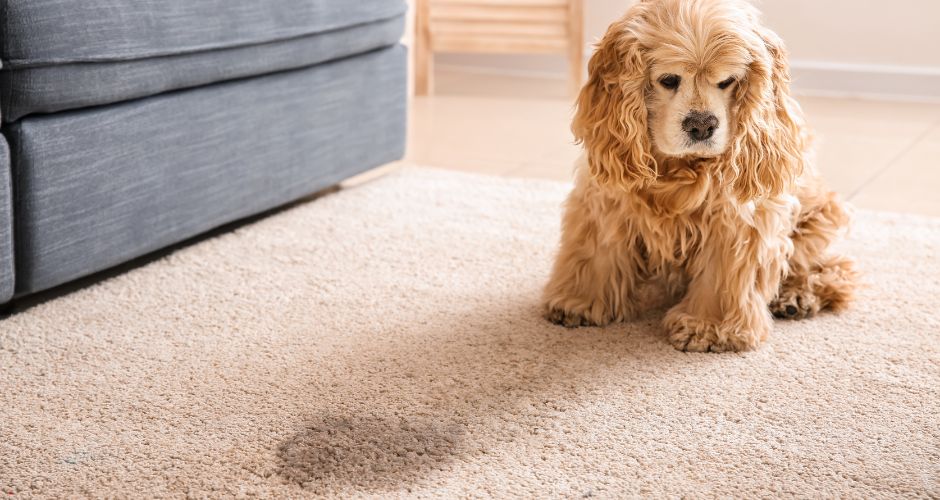
Fabric Stains from Red Wine:
- Dab the red wine stain with a clean cloth to remove excess liquid.
- Gently blot the stain with club soda or white wine.
- If the stain persists, create a paste by mixing equal parts salt and baking soda with a few drops of water. Apply, let it dry, and brush it off.
Wall Markers or Ink Stains:
- Rub rubbing alcohol on a cotton ball or clean rag.
- Gently wipe the stain instead of rubbing to avoid paint damage.
- Consider using a non-abrasive eraser, baking soda, and water paste if the color remains.
Surfaces with Melted Wax:
- Let the wax cool and solidify.
- Remove as much wax as possible with a plastic scraper or a credit card edge.
- Cover the remaining wax with a paper towel or a brown paper bag.
- Use a warm iron set to the lowest temperature to melt and absorb the wax onto the paper slowly.
Soap Scum in the Bathroom:
- Mix equal parts dish soap and white vinegar in a spray bottle.
- Spray the solution on soap-scum-covered surfaces.
- After allowing it to sit, scrub it with a sponge or non-abrasive scrubber.
Click here Write for us Cleaning to Share Your Cleaning Insights
Finding Motivation for Cleaning: Tips and Tricks
Cleaning, while a necessary task, is sometimes the most exciting or motivating activity. Finding the drive to start and finish significant cleaning projects or tackle cluttered living spaces can be challenging. However, by employing the right strategies, you can motivate yourself to clean efficiently and enjoy the process. Here are some ideas to inspire you to clean:
Set Clear and Achievable Goals:
Begin by defining clear cleaning goals. Divide larger tasks into smaller, more manageable segments. For example, rather than contemplating, “I must clean the entire house,” set achievable goals like, “Today, I’ll initiate with the kitchen, and tomorrow, I’ll concentrate on the living room.” Establishing clear and attainable objectives reduces the sense of being overwhelmed by the process.
Create a Cleaning Schedule:
Developing a cleaning routine can help you stay motivated and organized. Allocate specific cleaning tasks to particular days or time slots during the week. Knowing what needs to be done on a given day provides structure and makes the workload feel more manageable.
Use a Timer:
Utilize techniques like the “Pomodoro Technique” or similar time management methods to divide cleaning tasks into focused timed intervals. For example, work on cleaning for 25 minutes, then take a 5-minute break. Repeat as needed. Timers create a sense of urgency and prevent burnout.
Listen to Inspiring Music or Podcasts:
Put on your favorite music or listen to engaging podcasts while you clean. Music can boost your mood and energy, making cleaning less like a chore. Listening to podcasts can also make the time pass quickly as you focus on the content rather than the task.
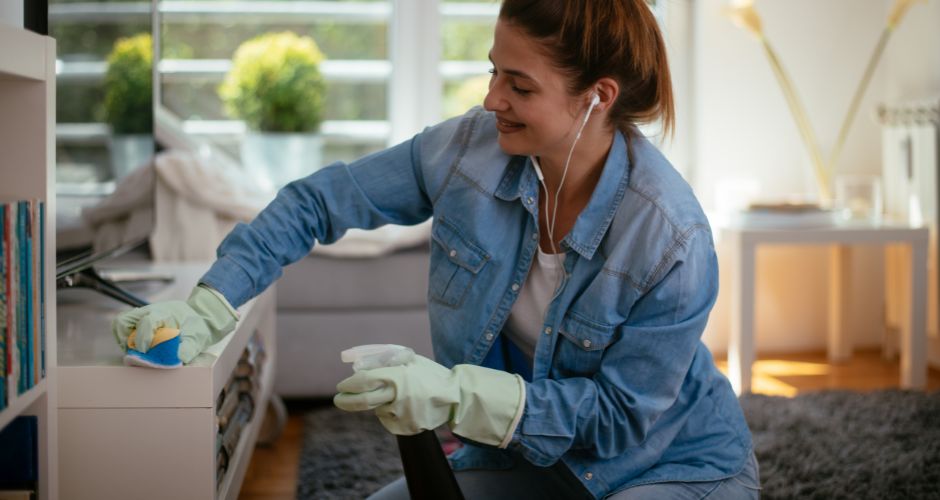
Visualize the End Result:
Please take a moment to imagine how your space will look and feel once it’s clean and organized. Visualizing the outcome can be a powerful motivator, as it reminds you of the benefits of your efforts.
Reward Yourself:
Treat yourself with small rewards after completing cleaning tasks. Consider indulging in a favorite snack, relaxing bath, or watching an episode of your preferred TV show. Tips can enhance the cleaning experience and provide an incentive to finish.
Find a Cleaning Partner:
Cleaning can become a social activity with a friend or family member. You can engage in conversation, exchange housekeeping tips, and motivate each other to stay on track. Plus, it can make the time pass more quickly.
Start with Decluttering:
A great way to kickstart your motivation for cleaning is by decluttering. Remove items that no longer serve a purpose or clutter your space. A clutter-free environment is visually appealing and makes the cleaning process smoother.
Set a Deadline or Hosting Date:
Use upcoming deadlines or planned visits from guests as motivation. Knowing that others will see your neat and well-organized space can provide a solid incentive to get things done.
Prioritize Health and Well-being:
Consider the health benefits of a clean home. A clean environment reduces allergens, promotes better mental health, and reduces stress. Remember that maintaining a clean living space is an investment in your well-being.
Track Your Progress:
Keep a record of your cleaning achievements in a checklist or journal. Taking pride in your accomplishments can boost your motivation and sense of action.
Conclusion
While cleaning may not always be the most exciting task, it’s essential for maintaining a clean and organized living environment. Setting clear goals, establishing a routine, and using these motivating strategies can turn cleaning into a manageable and enjoyable endeavor. Keep in mind that a clean home not only enhances aesthetics but also contributes to your overall well-being and peace of mind.


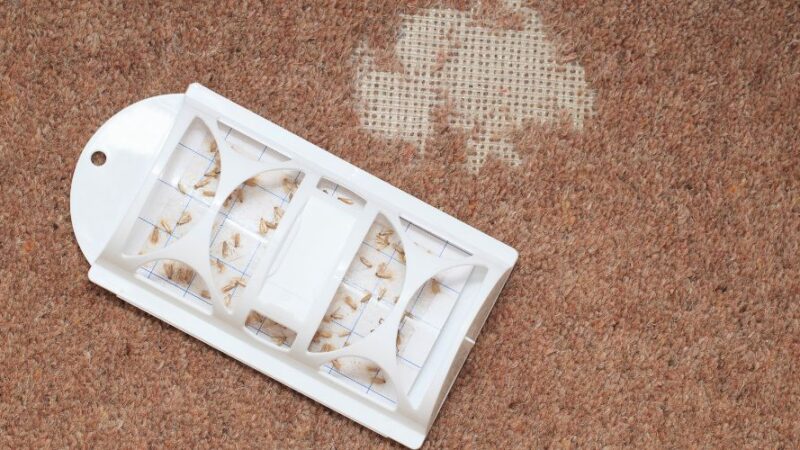

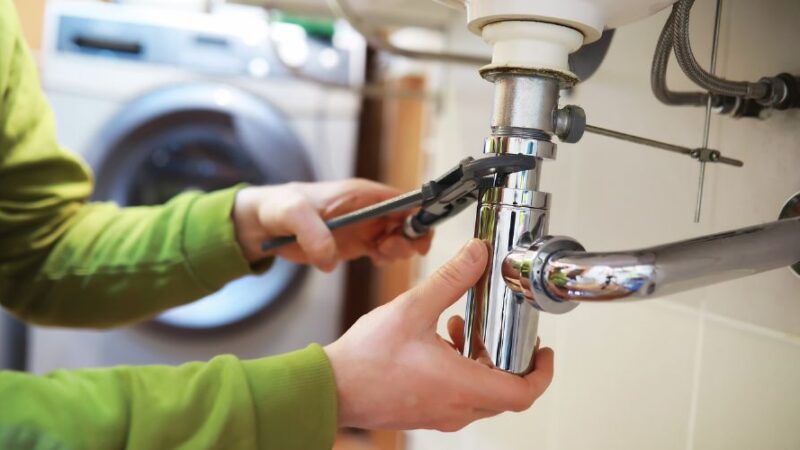

2 thoughts on “Ultimate Guide to Deep Cleaning Your Home”